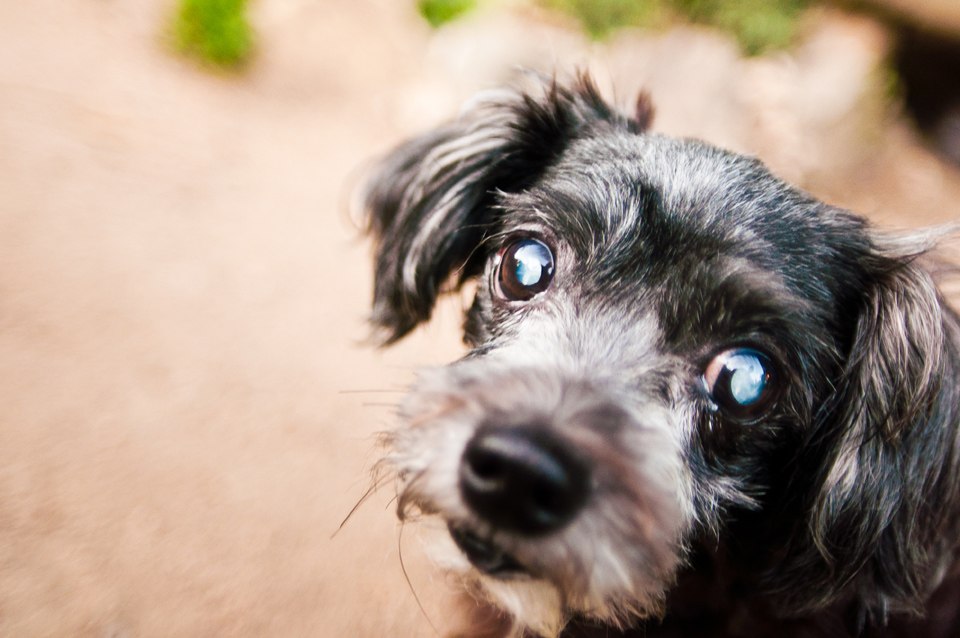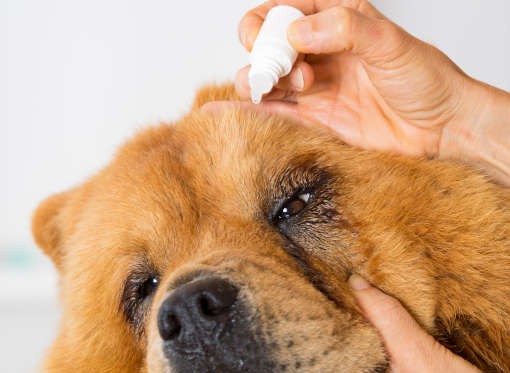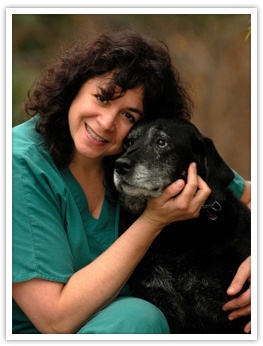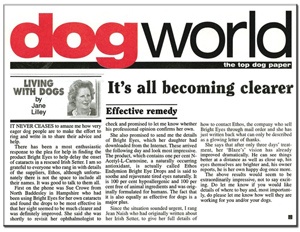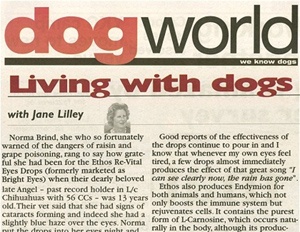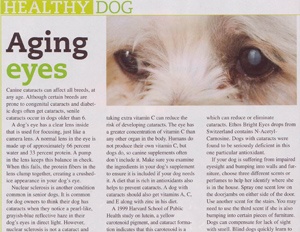
Dog Cataract Eye Drops
Avoid the Risks and Costs of Cataract Surgery – Naturally
Cataracts are a common condition in dogs, and can result in serious vision impairments and may eventually lead to complete blindness.
A dog develops a cataract when the lens of the eye clouds due to changes in the water balance in the lens or changes to the proteins within it. This cloudiness makes it difficult for light to reach the retina, leading to poor vision.
Dog cataracts are a clouding of the lens in the eye that can occur due to various causes. They can range from small, cloudy patches in one or both eyes, to larger, more dense patches with impaired vision.
Common causes of cataracts in dogs and pets include aging, heredity, high blood pressure and diabetes. Dog cataracts can also be caused by eye trauma or infection, which can result in more severe and rapid progression of canine cataracts.
If left untreated, a dog’s vision will generally deteriorate until he/she is completely blind.
Until recently, the only way to restore vision in an affected dog is to surgically remove the cataract and replace it with an artificial lens. This must be done under sterile conditions as any bacteria or dirt can cause a serious infection in the eye. Treatment is expensive and the success rate is not always guaranteed, but it is still important to seek help from a trained veterinarian as soon as possible.
We discuss potential complications of canine cataract surgery below.
Early intervention can help slow down or even halt the progression of the cataract and improve your dog’s quality of life. Therefore, if you suspect your dog may have developed a cataract, contact your veterinarian immediately to discuss a treatment plan.
Dog Cataract Treatments Without Surgery
How To Protect And Restore Your Pet’s Eye Health
An operation is not a good option for all dogs, and some dogs may not be able to safely undergo the procedure. Fortunately, there are other treatments available for cataracts.
Most veterinarians believe, or say there’s no known way to reverse or slow the progression of cataracts. Yet, clinical evidence suggests otherwise. Studies have shown that NAC Carnosine eye drops can actually prevent and reduce cataracts in 90% of cases over a 3 to 12 month period of daily application of 3 to 4 drops a day.
Safeguard and Restore Your Pet’s Vision Naturally
-
- Prevent Cataracts: Safeguard your furry friend’s eyesight, reducing the necessity for surgeries or treatments, so you can enjoy life together with clear, healthy eyes.
-
- Reduce Cataracts: Mitigate the impact and progression of cataracts in your pet, aiding in the restoration of better vision and independence as they age.
-
- Diminish Glare Sensitivity: Enhance your pet’s comfort and safety in bright light conditions, whether it’s sunny walks or car rides.
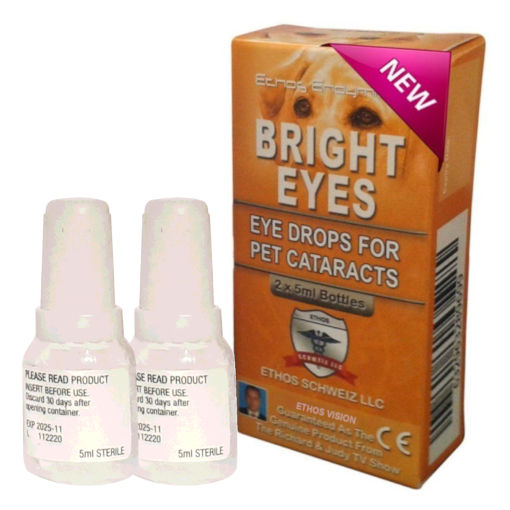
-
- Soothe Dry Eyes: Alleviate the discomfort of dry eyes in your pet, ensuring their eyes stay moist, comfortable, and hydrated throughout the day.
-
- Enhance Visual Acuity: Give your pet sharper, more detailed vision, making daily activities like play, exploring, and spotting their favourite toys more enjoyable.
-
- Safe and Effective for Canine Diabetics: Offer diabetic pets a dependable solution for their eye health, reducing the risk of complications and maintaining their visual quality.
-
- Featured and Endorsed on UK Television: Trust a product that has been showcased on UK television, signifying its credibility and endorsement by reputable sources.
-
- Crafted with Two FDA-approved Lubricants: Rest assured that the product complies with rigorous safety and efficacy standards, incorporating two FDA-approved lubricants to ensure the well-being of your pet’s eyes.
What Is Carnosine?
Carnosine is a naturally occurring compound found in all mammal cells. It is known for its antioxidant and anti-inflammatory properties, which can help protect the lens of the eye from free radical damage and inflammation.
Eye drops containing NAC Carnosine have been shown to be incredibly effective in restoring vision in dogs with cataracts. Clinical studies show the potential for NAC drops to treat cataracts and prevent cataracts, naturally.
Natural Treatment for Dogs and Pets with Cataracts
Ethos Bright Eyes NAC Carnosine Eye Drops are completely safe and non-intrusive treatment for dogs and pets with cataracts. They cost far less than surgery and have shown to be very effective with no known side effects. They are considered safe as they are natural and suitable for use in all dogs.
Ethos NAC eye drops will help to clear the cataracts, improve your dogs general vision, can prevent, delay and even reverse other symptoms of eye health degeneration associated with old age.
Do eye drops for dogs cataracts really work?
‘Ethos Carnosine Eye Drops For Pets’ are the exact same formula carnosine eye drops used in the UK TV trials, where three people with varying severity of cataracts were treated with great success.
Dr. Elizabette Cohen’s Success with Ethos Bright Eyes
My name is Dr. Elizabette Cohen and I have been practicing high quality medicine and surgery in New York since 1988.
I am the WCBS 880 news radio vet delivering ‘Healthy and Happy Pet’ reports heard every Saturday and Sunday on the radio and internet.
I am the author of ‘Most of My Patients Wear Fur’, ‘Tales of Small Animals’ and ‘Their Big City Vet’. This site is all about helping you keep your pet healthy, happy and free of visually impairing eye conditions including cataracts and glaucoma.
Please watch the video above for the full amazing story!
“Treating cataracts with Ethos Bright Eyes for Pets can dramatically improve the quality of your dog’s eyesight and quality of life, without the risk or cost associated with operations”.
Please click on the images below to read the 3rd party articles
and media publication reviews of Ethos Bright Eyes™ for Pets
Ethos Products Featured In Many Publications and On National UK Television
Ethos Bright Eyes™ and Ethos Carnosine Powder™ have been featured in many publications, including Dog World, Healthy Dog, The Daily Mail and The Telegraph.
They have also been put to the test by one of the UK’s largest television networks. Three people were independently verified as having a reduction in their cataracts and achieving better vision in just six weeks—a testament to the effectiveness of Ethos NAC Carnosine eye drops!
If you’re looking for an effective dog cataract treatment plan, consider dog cataract eye drops such as Ethos Bright Eyes for Pets and Dogs.
With the right care, dog owners can play an important role in restoring and maintaining their dog’s eye health. Ethos Bright Eyes™ and Ethos Endymion Carnosine Powder™ can be effective cataract treatments and are only available online.
PLEASE NOTE: Results vary depending on the nature and severity of your pet’s eye problems. We highly recommend a course of three to six months (three to six or nine boxes) of Ethos Bright Eyes™ to see a noticeable improvement in vision clarity, cataract reduction or quality of eye sight.
Buyer Protection and Best Prices Guaranteed
Shop with Confidence on ethosVision.com
-
Risk Free Buying – 100% Complete Buyer Protection on all orders
-
Safe and Secure Payments on ALL Orders through Stripe and PayPal Trusted Payment Gateways
-
Free World Wide Shipping with Tracking available on ALL Orders From Our UK or USA Fulfilment Centres
-
Best Price Guarantee – You will not find ‘Genuine Ethos Products’ cheaper online. If you do, please notify us immediately by email: admin@ethosvision.com
Fast – Secure – One-Click Payments – For Fast Checkout

Canine Cataracts
What You Need To Know
What do dog cataracts look like?
If you notice that your dogs vision is deteriorating or your dog appears to have any cloudiness or strange colouration in one or both of her eyes, these may be signs of canine cataracts.
Glare sensitivity, poor night vision, dilated pupils and squinting may also be apparent.
Please take your dog to your veterinarian as cataracts can develop fairly quickly.
If left untreated, cataracts can sometimes cause an inflammation in the eye called ‘Lens-Induced Uveitis’ (LIU) which in turn can lead to glaucoma. If the LIU is left untreated and glaucoma does develop, then surgery might not be possible.
If your vet diagnoses your dog with age related cataracts, or diabetic cataracts, then up until recently, there has only been one option available for treating canine cataracts. Surgical procedures can remove a cataract, but this is an expensive procedure not without its risks and may not be possible for some dogs, depending on their age, health and severity of the cataract development.
In most cases cataracts can be surgically removed, but this is generally a very costly and sometimes risky procedure.
What does Dog Cataract Surgery Cost?
The cost of dog cataract surgery can vary depending on the type of dog and medical facility where it is performed. The average cost ranges from $1,000 to $3,000 per eye.
Canine Cataract Surgery
Potential Risks and Complications
Cataract surgery is a safe and effective way to restore vision in dogs with cataracts, however, it carries the risk of certain complications. The most common risks associated with this surgical procedure include posterior capsule rupture/vitreous loss, cystoid macular edema, endophthalmitis, vitreous/suprachoroidal hemorrhage, retinal tears/detachment, and lens dislocation.
While these complications are rare, it is important to be aware of the risks and to follow your veterinarian’s pre- and post-operative instructions to ensure a successful outcome.
The following is an overview of the potential complications.
Posterior Capsule Rupture/Vitreous Loss
Due to the nature of cataract surgery, posterior capsule tears may occur at any point during the operation. In cases where a rupture occurs, vitreous loss can follow which can lead to complications such as retinal detachment and endophthalmitis.
Cystoid Macular Edema
This complication is caused by accumulation of fluid in the macula of the eye and can lead to a decrease vision or even blindness. It is typically treated with anti-inflammatory medications, but may require additional treatment in more severe cases.
Endophthalmitis
Endophthalmitis is an inflammation of the interior of the eye caused by bacteria or fungi. It can be difficult to treat and often requires antibiotics, antifungal medications, or even surgery in some cases.
Vitreous/Suprachoroidal Hemorrhage
Bleeding from either the vitreous or suprachoroidal tissue can occur during surgery and is especially more likely with complications such as posterior capsule rupture. This may require additional medical treatment and in some cases, surgery.
Retinal Tears/Detachment
Retinal tears or detachment can occur due to vitreous loss, trauma, or other complications related to cataract surgical procedures. It can lead to vision loss and must be treated promptly as it can cause permanent damage.
Lens Dislocation
Surgical complications such as capsular disruption can lead to lens dislocation, which can result in changes in the eyes refractive state and cause amblyopia (lazy eye). Treatment is usually based on the severity of the dislocation and may include additional surgery.
Overall, it is important to be aware of the potential risks associated with cataract surgery so that you can be prepared for any complications that may arise. In some cases, a vet may recommend alternative treatments such as cataract removal without surgery or medical therapy if the risk of complications is too great. It is essential to follow your veterinarian’s instructions for pre- and post-operative care in order to ensure successful surgery and a better outcome for your pet.
References:
https://www.petmd.com/dog/conditions/eyes/c_dg_cataracts
https://vcahospitals.com/know-your-pet/cataracts-in-dogs
https://vcahospitals.com/know-your-pet/nuclear sclerosis-in-dogs
Safe Alternative To Cataract Surgery
‘Ethos Brights for Pet Cataracts’ Customer Reviews and Testimonials
Please note: Results will vary according to the nature of the eye disorder, severity of cataract and application of Bright Eyes Drops. Especially mature cataracts and diabetic cataracts.
Ethos NAC drops are an excellent eye drop to manage age related cataracts and protection from other age related eye disorders.
Hello Mark,
I’ve been using the drops on my little ginger cat Tigger, with the powder in his water too. He will be 17 in November.
After 3 weeks he could see a piece of ribbon being wiggled in front of him and was pouncing on it accurately, which was an absolute miracle after wandering around blind. The cataracts had crept up on him, so I didn’t actually notice until he was bumping into furniture. 3 months earlier he was catching rabbits and bringing them through the cat flap!
The drops are absolutely fantastic. I’m taking the powder myself now.
Thanks so much, Karen
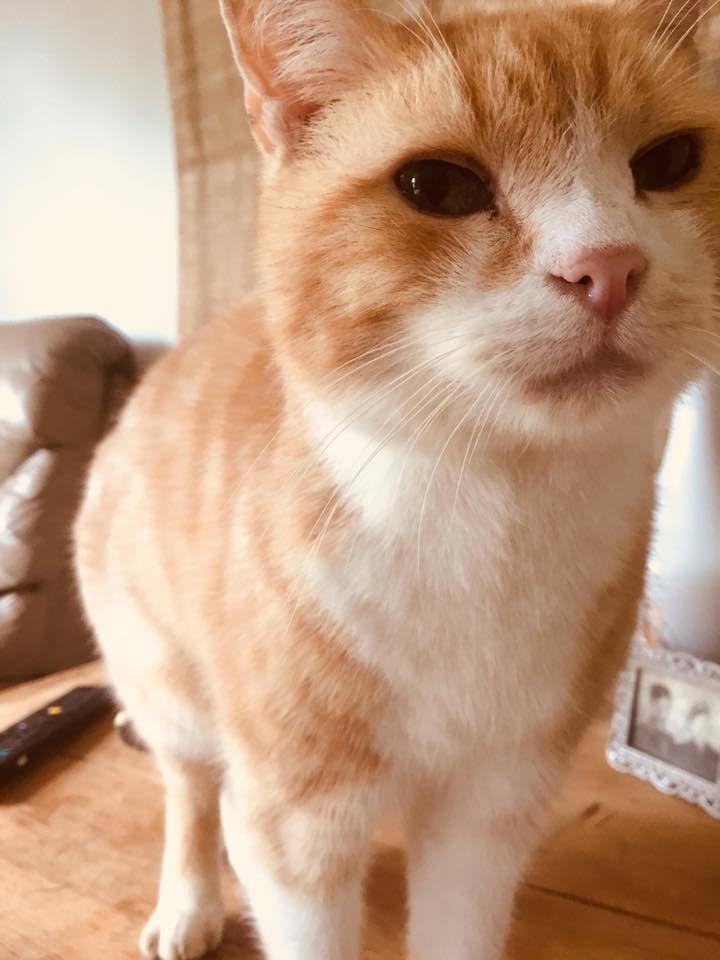
Great Recovery Tigger!
Ethos Carnosine Products
Featured, Tested and Endorsed By Big UK Media


